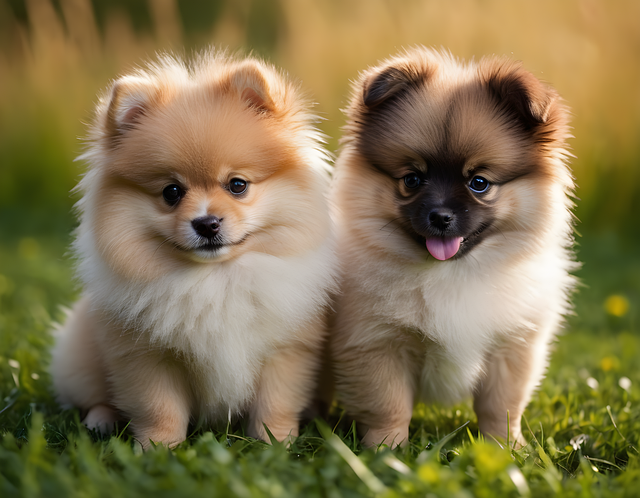
How do i train my dog to be obedient?
Watching your dog dart across the park ignoring your calls isn’t just frustrating—it can put them at risk near busy streets or public spaces.
Pomeranians are tiny bundles of energy with big personalities, but their small size can make toilet training feel tricky. Those little bladders don’t hold much, and their curious nature might have them stopping to sniff every corner instead of focusing on the task at hand. But with a little routine and lots of positivity, even the most distractible Pom can learn where to do their business—saving you from unexpected messes and keeping your home fresh.
Start by setting a strict schedule. Poms thrive on predictability, so take them out first thing in the morning, right after meals, after naps, and before bed. When you’re outside, pick a spot and stay there—too much wandering can make them forget why they’re there. Use a simple cue, like “go potty,” each time you take them out. They’ll start linking the phrase to the action, and soon they’ll know what’s expected. If they go in the right spot, cheer like it’s the best thing you’ve ever seen—offer a tiny treat or a quick play session. Positive reinforcement works wonders with these eager-to-please pups.
Accidents will happen, especially with puppies, but how you handle them matters. If you catch them mid-mess, a firm “no” and a gentle scoop to take them outside can help. Never yell or rub their nose in it—that scares them and might make them hide to go, which makes training harder. Clean up accidents with an enzymatic cleaner (regular soap can leave smells that attract them back) to keep the area from becoming a repeat spot. The key is to stay calm; getting frustrated only slows progress.
 Indoor options can be a lifesaver, especially in bad weather or if you live in an apartment. Puppy pads or a small artificial grass patch by the door gives them a safe spot when they can’t get outside right away. Introduce it slowly—place them on the pad after meals and praise them when they use it. As they get older, you can gradually move the pad closer to the door, then outside, to transition them to going outdoors full-time. Some Poms prefer indoor spots forever, and that’s okay too—what matters is consistency.
Indoor options can be a lifesaver, especially in bad weather or if you live in an apartment. Puppy pads or a small artificial grass patch by the door gives them a safe spot when they can’t get outside right away. Introduce it slowly—place them on the pad after meals and praise them when they use it. As they get older, you can gradually move the pad closer to the door, then outside, to transition them to going outdoors full-time. Some Poms prefer indoor spots forever, and that’s okay too—what matters is consistency.
Watch for signs they need to go: circling, sniffing the floor, or whining. Poms are smart, and they’ll start telling you when they need out if you pay attention. If you’re crate training (a great way to teach bladder control), make sure the crate is small enough that they won’t want to soil their sleeping space. Let them out every couple of hours, and never leave them crated for too long—their small size means they can’t hold it like larger dogs.
Remember, every Pom learns at their own pace. Some catch on in a few weeks, others take a couple of months. Age plays a role too—puppies under six months have less control, so be extra patient. Stick to the schedule, keep rewarding good behavior, and soon you’ll notice fewer accidents. Before you know it, your Pom will trot to the door, ready to go outside, and you’ll both breathe easier. Training builds trust, and a well-trained Pom is a happy, confident companion—one who knows exactly where to go when nature calls.

Watching your dog dart across the park ignoring your calls isn’t just frustrating—it can put them at risk near busy streets or public spaces.

New puppy owners often find themselves rushing to clean up accidents before they set in, and that’s where puppy pad training becomes a game-changer.

If you've noticed your dog's waistline disappearing and your veterinarian has mentioned those few extra pounds, your first instinct might be to simply reduce the amount of food in their bowl.

Training a dog to use a designated spot indoors isn’t as daunting as many new owners fear, but it does take consistency and an understanding of your pet’s needs.

That moment of dread on a walk is all too familiar for many new dog owners. You see another dog approaching down the sidewalk of your neighborhood

If the sight of another dog on your neighborhood walk makes your heart sink as your own dog erupts into a frenzy of barking and lunging, you're not alone.